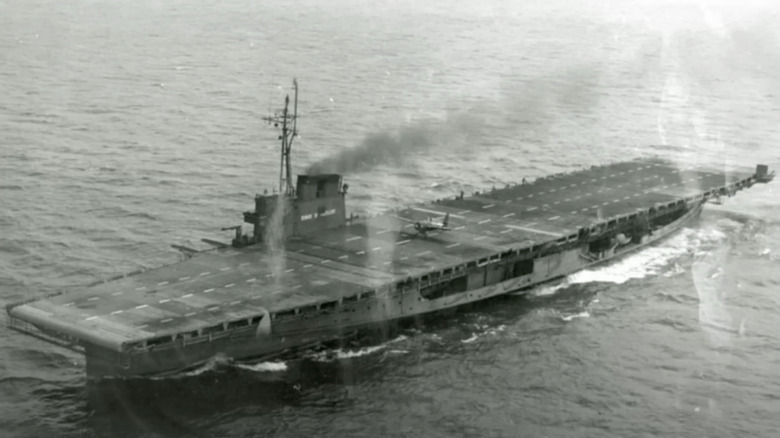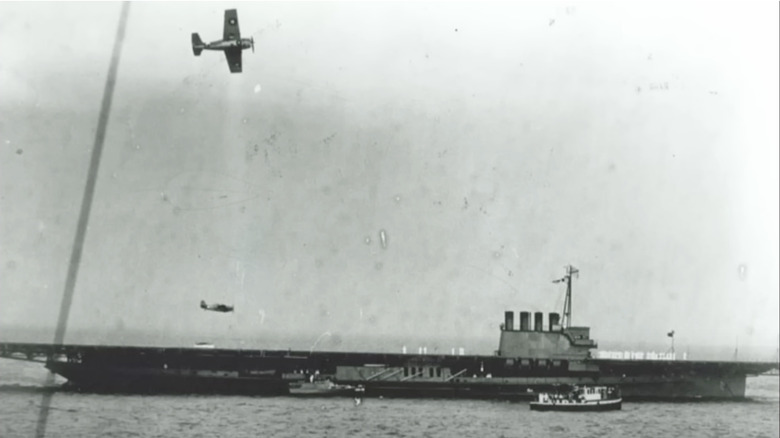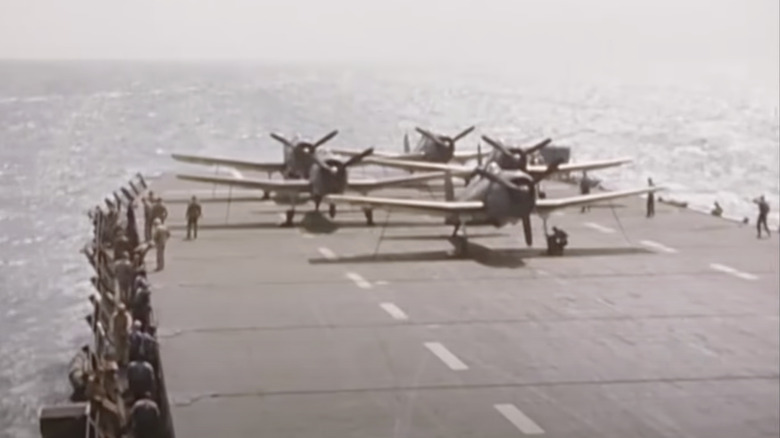Why Were There Aircraft Carriers In The Great Lakes During World War II?
The weather was a comfortable 73 degrees Fahrenheit the morning of Sunday, December 7, 1941, on the island of Oahu. Light cloud cover and a northeast wind of 21 mph made for a calm, leisurely day for the sailors, marines, and civilians that were there. The calm would be shattered at 7:55 a.m. that morning when the first wave of Japanese air craft, led by Captain Mitsuo Fuchida, attacked the U.S. Pacific Fleet stationed at Pearl Harbor. The attack consisted of 353 aircraft, including torpedo planes, bombers, and fighters, and lasted for only one hour and fifteen minutes. The damage done in that time was devastating.
The U.S. incurred 3,435 casualties (military and civilian), lost or had damage to 188 planes, 8 battleships (the USS Arizona alone accounted for half of the dead), 3 light cruisers, and 4 other vessels. The Japanese failed to take out the three aircraft carriers of the U.S. Pacific fleet however, as they were out to sea. This would come back to haunt them. But the sneak attack on Pearl Harbor and the U.S. entry into World War II posed a problem: where to train new pilots, as both the east and west coasts seemed susceptible to enemy attack. The answer came in the form of the Inland seas of America, better known as the Great Lakes.
Use what you have
The U.S. had eight carriers at the time, with more being built. The identification of the Great Lakes as a training site for carrier pilots was the brainchild of Captain R.F. Whitehead. He, along with Captain DeWitt C. Ramsey, assistant chief of the Navy's Bureau of Aeronautics, worked out how to pull this off. New pilots needed consistent, uninterrupted training to become proficient, and to do that, they needed a carrier. As there were no carriers available since they were all designated combat vessels, they would have to create their own. These Great Lakes aircraft carriers would unofficially be referred to as the Cornbelt Fleet.
This 'fleet' consisted of two ships, both of which started life in different capacities. The first was a sidewheel steamship that was built in 1913 by the American Shipbuilding Company in Wyandotte, Michigan. Originally christened the Seeandbee (and owned by the C. and B. Transit Company), the Navy purchased the ship in 1942 and spent four months converting it, including the addition of a 500-foot wooden landing deck. Upon completion, the ship was commissioned as the USS Wolverine. A second training carrier was soon needed, so the Navy acquired another in 1943. Starting life as the Greater Buffalo, this steamship was sailed from Lake Erie to join its sister ship at the Great Lakes Naval Training Station in Chicago, Illinois. After undergoing refitting, including the addition of a steel flight deck, the vessel was commissioned as the USS Sable.
The service of the Great Lakes carriers
The arrival of the USS Wolverine in Chicago on August 22, 1942, was described by Ward Walker of the Chicago Sunday Tribune as "a fantastic sight to a landlubber," with a look that reminded him of a "floating book." Once the first flight of Grumman F4F Wildcat fighters arrived, training quickly got underway on the Wolverine. Over 400 pilots would be qualified within four months before the arrival of the Sable. The Sable's arrival in 1943 allowed for the training to pick up significantly. Normal training for both ships saw 30 pilots qualified in a day, but the Sable would break this when it qualified 59 pilots in the same period.
The Cornbelt Fleet would go on to qualify more than 12,000 pilots, including President George H.W. Bush (who would fly nearly 60 combat missions) during its service. The fleet also helped to qualify Navy personnel as Landing Signals Officers (those that stood on the deck of a carrier with different colored paddles to guide pilots), as well as other critical carrier positions, such as arresting crew, and ordnance and fuel handler. The surrender of the Japanese in 1945 brought the service of the Wolverine and the Sable to an end. Both ships were decommissioned on November 7, 1945, and then sold for scrap sometime after.


